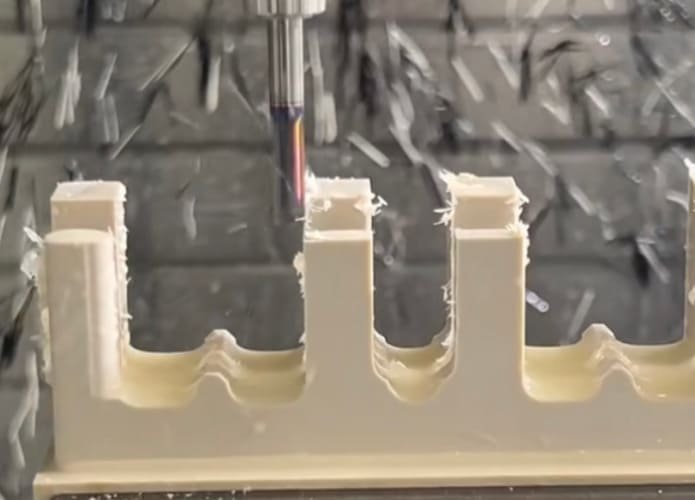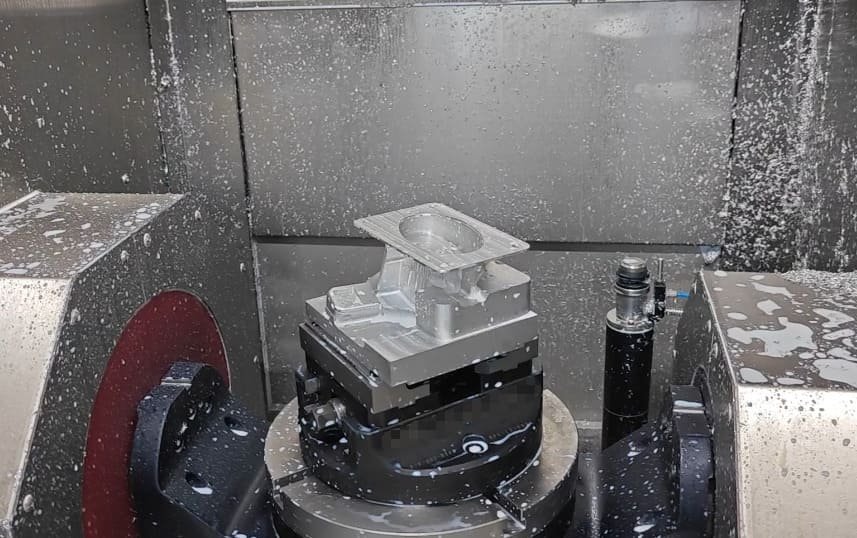Stainless steel and titanium are both crucial in modern manufacturing. Each material has its own strengths. Stainless steel is easy to fabricate, affordable and durable. On the other hand titanium resists corrosion well and has a high strength‐to‐weight ratio.
When you choose a material for your project you need to look beyond the technical data. Right choice depends on what your application requires. Therefore by understanding how these materials differ, you can make better decisions according to your needs.
1. Strength to Weight Ratio
Titanium’s strength-to-weight ratio is one of its best qualities. With a tensile strength of 900 to 1200 MPa and a density of 4.5 g/cm³, titanium is great for weight sensitive applications. This is the reason aerospace and high performance automotive industries use it heavily.
Some stainless steel grades like 904L and 316 can match titanium’s tensile strength. But stainless steel, in general, has a higher density –mostly around 7.75 to 8.1 g/cm³. This extra weight makes stainless steel better for structural or general purpose use.
Implications
If your project needs weight reduction then titanium is a better choice. Its strength‐to‐weight ratio gives it a clear advantage over stainless steel.
2. Corrosion Resistance
Titanium forms a natural oxide layer that protects it from corrosion. This layer works well even in harsh environments like seawater or acidic conditions. Because of this you can depend on titanium for long term use in tough conditions.
Stainless steel resists corrosion because it has chromium. But in areas with high chlorides it can develop problems like crevice corrosion or pitting. These issues reduce its effectiveness when you need protection in very aggressive or specialized environments.
Uses
You will often find titanium in chemical processing, marine and biomedical fields. Its high corrosion resistance makes it a top choice for these uses. Stainless steel is more common in food production and general purpose areas. It’s best used where the environment is less extreme.
3. Thermal Conductivity
Titanium’s thermal conductivity is low about 6.7 to 7.5 W/m·K. So if you need to retain heat for better functioning or performance then titanium is a good choice.
Stainless steel has higher thermal conductivity, 15‐25 W/m·K. You’ll mostly find stainless steel in cooking equipment, heat exchangers as well as other roles where heat management is important.
When choosing between stainless steel & titanium, focus on your project’s thermal needs. If you need to get rid of heat fast then stainless steel is the way to go. Similarly titanium works well if you need to keep heat in.
4. Hardness and Wear Resistance
Commercially pure titanium doesn’t have high hardness. But titanium alloys like Ti‐6Al‐4V have a hardness of 330 HV. This level of hardness makes them appropriate for applications which need durability, strength as well as resistance to tough conditions.
440C stainless steel can become very hard up to 600 HV after heat treatment. This makes stainless steel great for wear resistant applications. You will find it in industrial machinery, cutting tools and other tough environments.
In Short
If your project needs high surface hardness stainless steel is mostly a better choice. Its versatility and wear resistance makes it the go to material for many industrial fields.
5. Biocompatibility
Titanium doesn’t cause toxicity or rejection by the human body. Because of this it’s the go‐to material for surgical devices and medical implants. Its properties make it reliable and safe for long term medical use.
Some stainless steel grades like 316L are used in medical fields. But their nickel content can cause allergic reactions. This makes stainless steel less appropriate for long term or sensitive applications.
Medical Uses
For long term implants titanium is a top choice because of its biocompatibility. Stainless steel is mostly used for surgical instruments and temporary implants. Its advantages are lower cost and high strength.
6. Electrical Conductivity
Titanium doesn’t conduct electricity well. Because of this you’ll rarely see it used in electrical applications. Although titanium is corrosion resistant and strong, its poor conductivity keeps it out of most high performance electrical uses.
Stainless steel also has low electrical conductivity particularly as compared to copper. But it conducts electricity slightly better than titanium. Moreover its corrosion resistance and moderate conductivity makes it appropriate for certain niche applications.
Usage
Stainless steel or titanium both are not a top choice for applications that need high electrical conductivity. Stainless steel works a bit better in some niche uses where corrosion resistance is also important. But both materials fall short of copper and other highly conductive metals so their use in electrical systems is limited.
7. Availability and Cost
Titanium is more expensive because it’s harder to extract and process. You’ll find it less available than many other materials. For projects where durability and performance matter most, titanium is a premium option.
Stainless steel is easy to source and affordable. Its wider availability and lower price make it the top pick for industries looking for affordable solutions. You can use stainless steel for budget friendly projects without sacrificing quality.
Budget Breakdown
If you have a tight budget, stainless steel is the practical and economical choice. Its availability and price make it the right choice for most cost sensitive needs. Titanium becomes the best option only when you need its higher durability & performance and can justify the extra cost.
8. Fabrication and Machinability
Titanium is difficult to machine because of its low thermal conductivity and galling. At Richconn we use advanced CNC machining, carbide tools and wire EDM to machine titanium efficiently and precisely.
Stainless steel 303 is easier to machine. Its free‐machining property makes it popular for jobs which need a lot of fabrication. Richconn’s CNC milling & turning services produces high quality stainless steel parts for many industrial fields.
Manufacturing Ability
Richconn has the equipment to manage complicated projects in both stainless steel and titanium. You can expect quality, precision as well as efficiency for all your manufacturing needs.
9. Melting Point and High Temperature Performance
Titanium has a melting point of 1,668 °C. This high melting point means it retains its strength at high temperatures. Because of this, titanium works well in demanding environments which need strong durability and heat resistance.
Stainless steel melts between 1,370 °C and 1,530 °C depending on the grade. Some types handle high heat well but in general, stainless steel doesn’t keep strength as well as titanium at extreme temperatures.
High Temperature Usage
Aerospace and other high temperature industrial fields use titanium because of its extraordinary heat resistance. Stainless steel is mostly used in industrial furnaces and exhaust systems. While it works well in these applications, its heat resistance is slightly lower than titanium’s.
10. Industrial Uses
Stainless Steel
- Construction: Builders use stainless steel for handrails, supports and fixtures. Its corrosion resistance and strength make it a popular choice.
- Food Processing Equipment: Stainless steel is a standard in hygiene‐focused industrial fields. It is easy to clean and doesn’t contaminate food.
- Automotive: Because of high strength and rust resistance it is used for trims, exhaust systems as well as decorative parts.
Titanium
- Aerospace: You’ll find titanium in spacecraft parts and airframes. Its lightweight strength and high corrosion & heat resistance make it perfect for these uses.
- Medical: Medical professionals choose titanium for prosthetics, implants and surgical instruments. It’s safe for the human body and doesn’t cause toxic reactions.
- Marine: It doesn’t corrode easily and withstands saltwater well. This is why shipbuilders, underwater cable manufacturers and desalination plants use titanium.
Comparison Table
| Property | Titanium | Stainless Steel |
|---|---|---|
| Density | ~ 4.5 g/cm³ — Lightweight, best for aerospace and mobility‐focused uses | ~ 7.8 g/cm³ — Heavier & better for structural stability |
| Tensile Strength | 900 – 1,200 MPa; can exceed 1,400 MPa in advanced alloys | 480 – 620 MPa in common grades; up to 800+ MPa in high-strength steels |
| Corrosion Resistance | Excellent in seawater, acids, and chlorides due to stable oxide layer | Good overall; may suffer pitting in salty or acidic environments |
| Hardness | Moderate (~ 330 HV for Ti-6Al-4V); lower in pure grades | Can be very high (~ 600 HV for 440C); heat‐treatable for wear resistance |
| Thermal Conductivity | Low (~ 6.7 W/m·K); helps retain heat | Higher (~ 15 – 25 W/m·K); effective for heat transfer applications |
| Electrical Conductivity | Poor (~ 2.38 MS/m) — not suited for conductors | Also poor (~ 1.45 MS/m), but slightly better than titanium |
| Biocompatibility | Highly biocompatible; best for implants & prosthetics | Good, especially 316L; potential nickel allergy risk |
| Machinability | Difficult; need cooling and specialized tooling | Easier to machine; free-machining grades widely used |
| Melting Point | ~ 1,668°C — maintains strength at high temps | ~ 1,370 – 1,530°C depending on alloy |
| Cost & Availability | Expensive & less abundant | Economical & widely available |
Which Metal Should You Choose?
If you need a material that is safe for the human body, light in weight and highly corrosion resistant then titanium is the way to go. These are critical in medical, aerospace as well as marine industrial fields where you can’t compromise on reliability or performance.
Stainless steel is better if your project needs a material which is easy to machine, affordable and durable. Its affordability and versatility makes it a favorite in many industrial fields.
Decision Factors
Think about what performance you expect, your application needs and your budget. Both metals have their strengths. Match the metal’s properties to your project’s needs and you’ll make the right decision.
To Sum Up
Stainless steel & titanium bring unique strengths to the table. Stainless steel gives solid durability, is more affordable and machines easily. This makes it appropriate for many industries. Titanium on the other hand stands out for its strong corrosion resistance, light weight and high strength. It is perfect for tough environments like medical or aerospace fields.
CNCPOR uses advanced CNC machining and deep expertise to shape stainless steel and titanium parts that meet your requirements. Contact us now to start your project.
Related Questions
-
Which material lasts longer: stainless steel or titanium?
Both stainless steel and titanium have a long lifespan. Stainless steel performs well against wear in areas with frequent contact. Titanium handles corrosion better. Your particular needs will determine which material is the better fit.
-
How do you choose a manufacturer for stainless steel or titanium parts?
Look for manufacturers with a strong project portfolio, machining expertise and strict quality control. At Richconn you get top notch machining for both stainless steel & titanium. We assure every part meets your standards for precision and quality.
-
Can you use titanium for mass production?
Titanium is more expensive but its performance is worth it for critical uses. For most large scale manufacturing, stainless steel is the more budget friendly option. Because it offers a good balance of durability and price for many industries.




